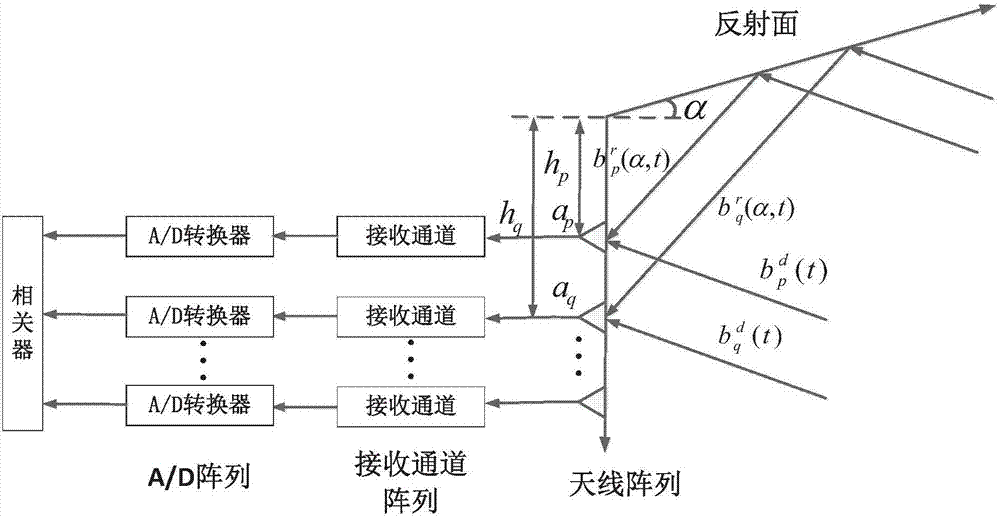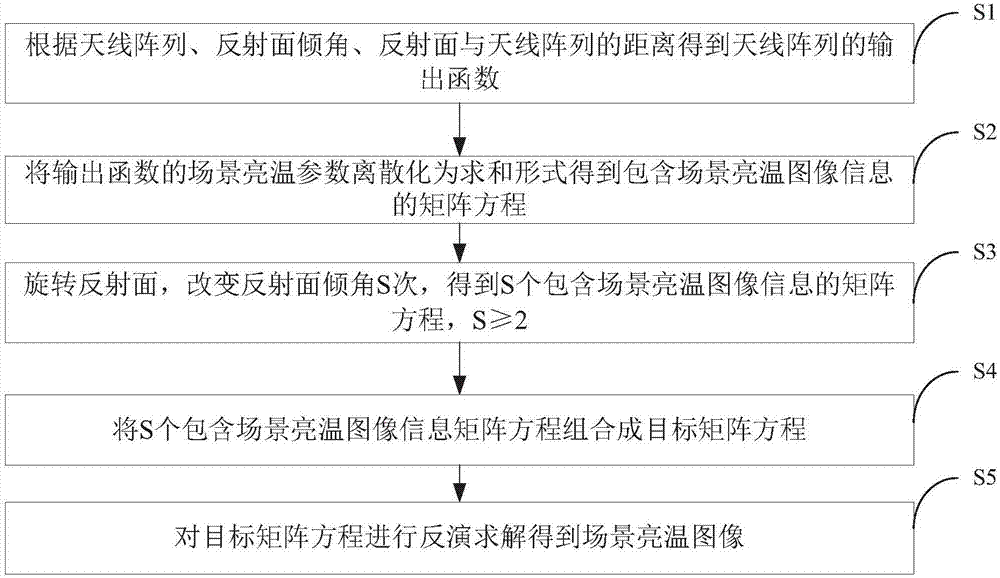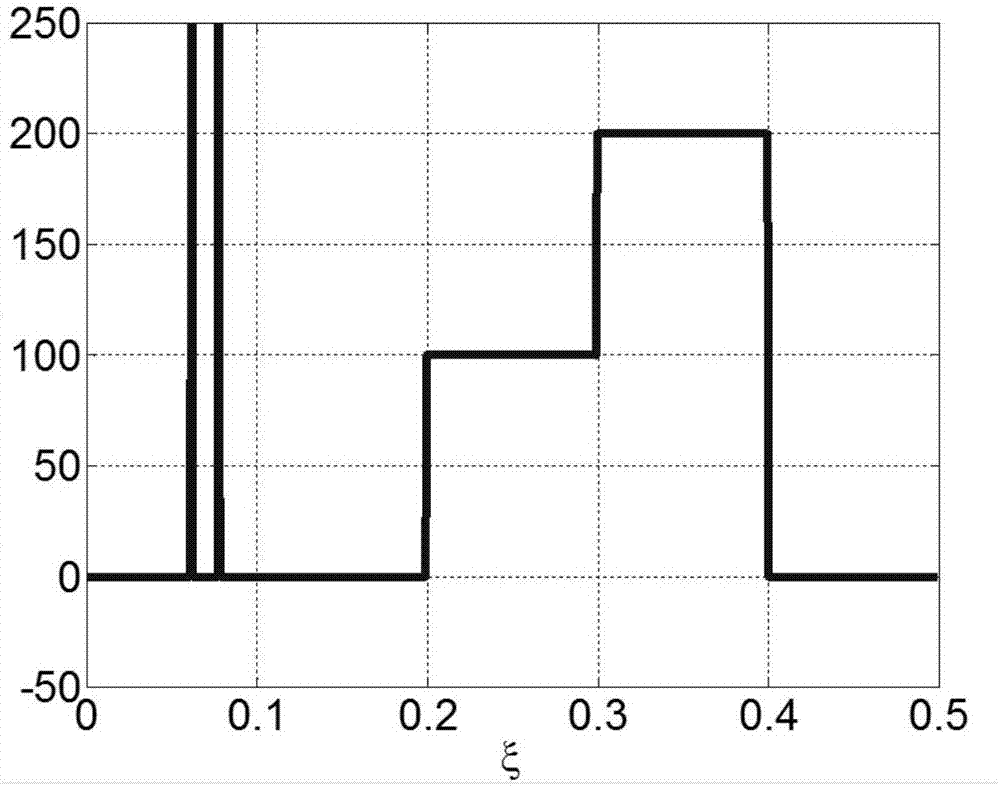Rotating-reflection-surface-based imaging method and system of mirroring synthetic aperture radiometer
A technology of rotating reflection and synthetic aperture, which is applied in the direction of radio wave reflection/re-radiation, using re-radiation, radio wave measurement system, etc., can solve the problems of high system complexity, improve the resolution of scene brightness temperature images, reduce The effect of number of antennas, size reduction and weight reduction
- Summary
- Abstract
- Description
- Claims
- Application Information
AI Technical Summary
Problems solved by technology
Method used
Image
Examples
Embodiment 1
[0092] Example 1: Brightness temperature image of the scene obtained when N=4
[0093] In this embodiment, for the antenna array, four antennas are arranged as a one-dimensional linear array, the distance between the antennas is {3λ, 19λ, 11λ}, and the distances between the reflecting surface and the first antenna of the antenna array are 2λ, 42λ, 102 lambda. image 3 The ideal scene brightness temperature image for testing is composed of two very close point sources and one extended source. The point source is used to test the resolution, and the extended source is used to simulate land, ocean, and cold air.
[0094] Specific steps are as follows:
[0095] (1) For a four-antenna array, set the distance between the reflective surface and the first antenna of the antenna array as 2λ, and the initial inclination angle between the reflective surface and the array as 1 degree, obtain the cross-correlation function and discretize it, and combine all the two antennas The cross-cor...
Embodiment 2
[0101] Example 2: The scene brightness temperature image obtained when N=1
[0102] For a single antenna, the distances between the reflective surface and the antenna are 200λ, 230λ, and 300λ, respectively. image 3 The ideal scene brightness temperature image for testing is composed of two very close point sources and one extended source. The point source is used to test the resolution, and the extended source is used to simulate land, ocean, and cold air.
[0103] Specific steps are as follows:
[0104] (1) For a single antenna, the distance between the reflective surface and the antenna is set to be 200λ, and the initial inclination angle between the reflective surface and the normal direction of the plane where the antenna is located is 1 degree, and the autocorrelation function is obtained and discretized to obtain the matrix equation;
[0105] (2) Rotate the reflective surface by 0.02 degrees each time until 5 degrees. After each rotation, a new matrix equation is obtai...
PUM
 Login to View More
Login to View More Abstract
Description
Claims
Application Information
 Login to View More
Login to View More - R&D
- Intellectual Property
- Life Sciences
- Materials
- Tech Scout
- Unparalleled Data Quality
- Higher Quality Content
- 60% Fewer Hallucinations
Browse by: Latest US Patents, China's latest patents, Technical Efficacy Thesaurus, Application Domain, Technology Topic, Popular Technical Reports.
© 2025 PatSnap. All rights reserved.Legal|Privacy policy|Modern Slavery Act Transparency Statement|Sitemap|About US| Contact US: help@patsnap.com



